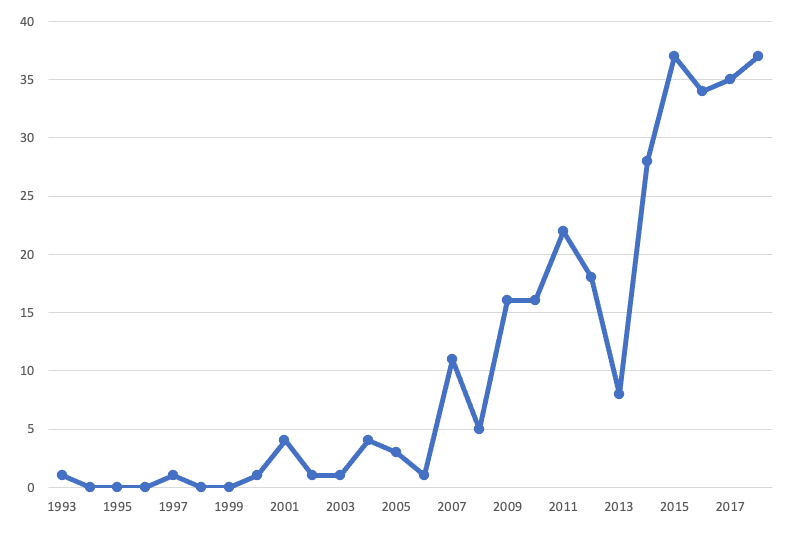Public engagement with science: The gap between ideals and reality
By Tony Van Witsen
Title: Public engagement with science—Origins, motives and impact in academic literature and science policy
Author(s) and Year: Peter Weingart, Marina Joubert, Karien Connoway, 2021
Journal: PLoS ONE
| TL;DR: The term “public engagement with science” is widely used to refer to a variety of outreach activities but the more popular it becomes and the more specific practices it encompasses, the less agreement there seems to be about what the term means. Why I chose this paper: When an institution becomes popular it runs the risk of becoming unquestioned. That’s precisely the time to kick the tires, peer under the hood and ask what kind of engagement is being delivered, in what way, to whom and with what results. |
The Problem
Public engagement with science has become normalized across many scientific institutions . Some of the most prestigious scientific bodies, such as the AAAS and the National Academy of Sciences in the United States, are solidly behind the public engagement concept, as is the Royal Society in the United Kingdom. There are science cafes in the U.S, Café Scientifique in England, along with Chai and Why in India. But, like pumpkin spice lattes, a trend may begin as something innovative, gain popularity, even show signs of becoming a fad, then eventually begin to attract criticism or questions about what’s being done with them and what they’re accomplishing.
Earlier research
In this spirit, some researchers have recently sought to investigate what actually happens in specific activities that fall under the label of public engagement. One example that may illustrate the point is a recent study published in Public Understanding of Science. Valerie Hase and colleagues studied a Swiss crowdfunding platform seeking donations for scientific research. They found that, rather than engaging with some hypothetical “public,” the site drew contributors who were older, better educated and more affluent than the population as a whole. They also had more experience with charitable giving and were more likely to know the fund-seeking scientists personally. One third were scientists themselves, with more positive attitudes toward science. The authors concluded that this well-intentioned form of engagement was nowhere near representative of the Swiss population as a whole.
The present study and methods
Looking at the problem more broadly, Peter Weingart, Marina Joubert and Karien Connoway investigated just what people meant when they spoke of public engagement and what kinds of practices they were referring to. They sought a first answer by studying how the term grew over the years in academic literature as well as policy papers. Using a method called thematic analysis, that looks for common themes or ideas across multiple documents, they searched for what different authors meant when they talked about public engagement. They focused not only on definitions but also motives: what leads different people and groups to engage with science and what purposes do they think engagement serves?
Findings
Writing in PLoS ONE, the authors found (as you might suspect) that references to public engagement with science became common in the early years of the 21st century and have increased since then.

Occurrences of the term “engagement” in published items in JCOM, PUS and SC in titles, abstracts or both, 1993-2018 N = 284. Adapted from Weingart et al (2021) Fig. 3
As the term began to be used more widely, meanings and purposes proliferated. The expected forms of engagement were there: media appearances, schools, science festivals, activities for kids, lectures and popular science books, but they were put to many different uses. Sometimes, the authors found, public engagement was an umbrella term, cited at different times for connecting many different audiences with science in many different ways. The two most frequent motives for scientists were to democratize access to science and educate people. However other users, beyond the immediate scientific community, sought greater accountability or greater inclusiveness or aspired to increase public trust in science or persuade people to accept new and possibly disturbing technologies.
Interestingly, the majority of the articles were already aware of shortcomings in current usage of the term “public engagement.” they recognized, for example, that many scientists aren’t trained or prepared to engage with nonscientific audiences. In addition, because engagement has so many different meanings, there is no single, widespread way to measure it, making it difficult or impossible to evaluate how well it works or whether it’s working at all. It is also widely recognized that audiences for engagement are very diverse and a single form of engagement may never exist.
The Impact
What do the authors make of this buzzing multitude within the house of engagement? They believe the continued use of the term itself constitutes “an effective surrender to the plethora of meanings, interpretations and activities that are all seeking inclusion in the popular appeal of the buzz.” They observe that public engagement began in the impulse to democratize science and free people from the powerlessness that comes from the modern world’s increasing reliance on technically trained experts, including scientists. Over time, this form of powerlessness leads to distrust and alienation as well as loss of legitimacy. Public engagement with science has been one effort to bridge this gap by democratizing expertise, if that isn’t an oxymoron. But as the engagement project’s ambitions grew, its rhetoric has been used to encompass a wider and wider range of purposes, with little indication of how to reach the lofty goal once envisioned for it. The authors believe current science communicators could engage their target audiences more successfully if the entire field had a clearer idea of who its stakeholders were and exactly what knowledge or understanding it was trying to convey.
Edited by Kirsten Giesbrecht and Niveen AbiGhannam
Cover image credit: NASA/ Bill Ingalls via Creative Commons
Chart credit: Adapted from Weingart et al. (2021)

